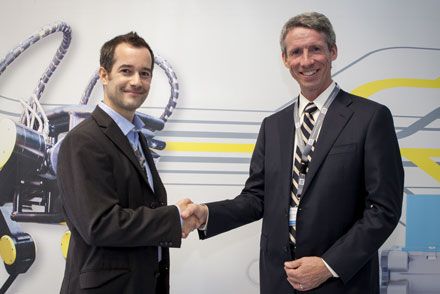The Moog@IIT joint lab was founded in 2016 and is focusing on the development of next-generation actuation and control technologies for autonomous robots. IIT and Moog are collaborating to develop the required technologies to push autonomous robots closer to the real-world applications and the market.
Moog is a worldwide designer, manufacturer, and integrator of precision control components and systems for aircraft, space vehicles, industrial machinery, marine, motorsport, and medical equipment. Its high-performance control systems and products are used in most commercial aircraft, by Formula 1 racing teams and in world-leading hydraulic legged robots. Moog is currently investing into the emerging field of autonomous systems and identified IIT as ideal research partner due to its unique know-how in the design and control of autonomous legged robots.
Key research activities of the joint lab include the development of next-generation, optimized actuation solutions as well as compact power generation and management systems for emerging robotics applications. Special attention is given to energy-efficiency, reliability and safety. Moog’s extensive expertise in systems certification will be applied to autonomous robots. Metal additive manufacturing technologies for titanium and aluminum are core to the newly developed actuation systems and robots.
The first major result of the joint lab is the new HyQReal quadruped robot with onboard hydraulics and battery. Moog's custom-made Integrated Smart Actuator (ISA), smart manifolds, fluid rotary unions and hydraulic pump units are installed in the new robot.
Previous test platforms for the new technologies were IIT’s 80kg quadruped robot HyQ and its successors. Since its construction in 2010, HyQ has demonstrated a wide repertoire of motions ranging from running and jumping to carefully planned locomotion over rough terrain. Its successor HyQReal is designed to become a rugged test platform for experiments outside the laboratory, for example on disaster sites, forests and construction sites. Future generations of legged robots are expected to assist human operators in dangerous and dirty applications like disaster response, remote handling of dangerous goods, as well as maintenance, inspection and load carrying tasks.
